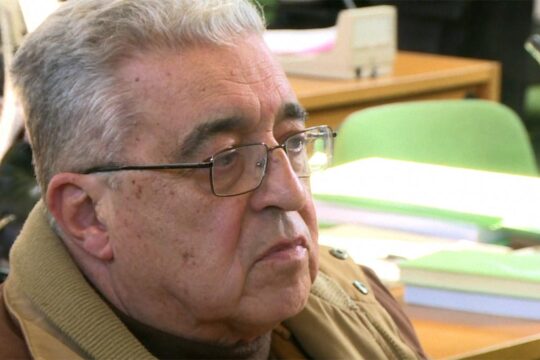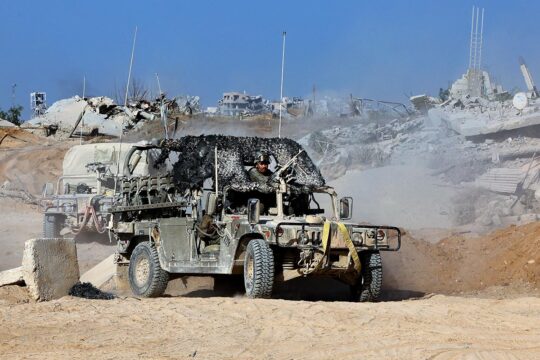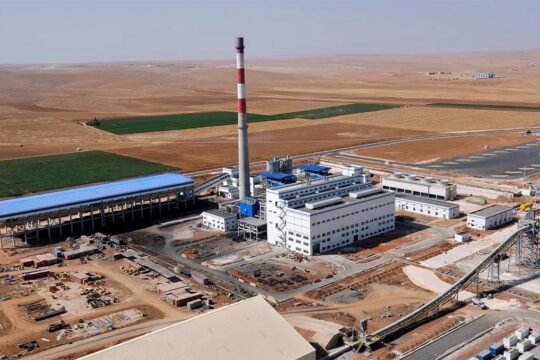On December 21, 2018, the First Assize Court of Appeals in Rome will decide whether to reopen investigations into Operation Condor’s crimes. Victims’ relatives and human rights activists are hopeful the tribunal will agree to consider recently come to light documents and witnesses. The reopening of proceedings can potentially overturn several acquittals dictated at first instance.
The Italian trial is just the most recent attempt to investigate the transnational atrocities – known as Operation Condor – perpetrated in South America during state-sponsored violence in the 1970s. In the 1980s, as South American military regimes slowly transitioned back to democracy, lawsuits were filed before the courts. Forty years later, extraordinarily, this unparalleled and multi-country process of justice continues to unfold.

Operation condor
Between the 1950s and 1980s, South America’s authoritarian regimes systematically repressed all forms of opposition, both peaceful and armed. Thousands became victims of illegal detentions, extrajudicial executions, murders, disappearances, torture, and sexual violence. Even babies born to women held in clandestine detention were illegally given to families loyal to the dictatorships.
Beyond repression inside each country, South America’s criminal states also created Operation Condor, in order to coordinate repression at a regional level and set up a borderless area of terror and impunity between at least 1975 and 1981 (see map below). Operation Condor was the codename given to the transnational coordination that Argentina, Bolivia, Chile, Paraguay and Uruguay established in 1975. Brazil joined later in 1976, while Peru and Ecuador did so in 1978.

Operation Condor spared no one. Refugees and asylum seekers were especially targeted, while children – illegally detained with their parents – had their biological identity stolen and replaced by that of adoptive families. Whilst there is no agreed upon number, a database accounting for the crimes of the coordinated regional repression has – so far – confirmed a minimum of 420 victims, encompassing eleven nationalities. The vast majority were Uruguayans (223 cases, 53%), followed by Argentines (75, 17%) and Chileans (62, 15%).
The use of a state-centric approach, which focuses on human rights violations committed inside state borders, has characterised transitional justice scholarship and practice. Such dominant lens has marginalised the analysis of human rights violations that do not squarely fit within national boundaries.
How to respond to terror that knows no borders? What options do victims, relatives, and human rights activists have in their quest for justice?
Trials for Operation Condor crimes provide valuable insights for accountability for extraterritorial human rights violations. The probing of Operation Condor’s transnational crimes encompasses a complex web of countries and actors. Since the late 1970s, at least 25 criminal investigations have unfolded in the domestic courts of seven countries, namely Argentina, Brazil, Chile, Uruguay, Paraguay, Italy, and the United States. The main catalyst behind this extraordinary process were survivors, their relatives, and supporters within human rights groups and civil society that never gave up on the search for justice.
Justice beyond borders
Categorising Operation Condor investigations by status, format, and country helps better understand this multifaceted justice process. Regarding judicial status, the majority of proceedings (15 out of 25) have been completed, with a first instance verdict at least having been dictated. One was shelved after the death of the only defendant in the case, while nine are still at the pre-trial phase. The sentences so far handed down in these 15 investigations found 71 defendants responsible for Operation Condor atrocities committed against 201 victims.
In terms of format, investigations fall into two main types. Most proceedings (22) probe specific episodes of crimes, whether delimited by the political affiliation of victims, the place of detention, or because of the emblematic nature of the wrongdoing. Examples include trials in Uruguay looking into the persecution unleashed against members of political groups in exile in Argentina, such as the Party for the Victory of the People (PVP) and the Unifying Action Groups (GAU). Another example is the landmark prosecution in Chile in the mid-1990s against the Head of the Chilean secret police and his Deputy for the September 1976 assassination in Washington DC of exiled Chilean diplomat Orlando Letelier and his colleague at the Institute for Policy Studies, Ronni Moffitt. Only in three cases have public prosecutors and judges probed the overall modus operandi of the transnational terror network. The foremost illustration here is the Argentine Operation Condor trial that, by scrutinising the cases of 107 emblematic victims of different nationalities, investigated the inner workings of the entire transnational terror network.

When looking at countries, Uruguay has the highest number of investigations (12). This can be partially explained by the fact that the majority of Condor’s victims were Uruguayans, but also because investigations there largely framed cases on an individual level. This is unlike in Argentina, where the mega-trials (mega causas, investigating large numbers of victims) have been the main format to organise investigations into past human rights violations. The five Argentine prosecutions, in fact, encompass much larger groups of Operation Condor victims, ranging from 40 to over 300 in each case. Furthermore, four investigations took place in Chile, and one each in Brazil, Italy, Paraguay, and the USA.
Assessment
This astonishing justice process, whose origins date back to the brave testimonies of Uruguayan survivors to Amnesty International in 1976 and 1977, persists today. Indeed, the most recent verdict was handed down in Chile just three months ago, on September 21, 2018.
These proceedings significantly scrutinised transnational crimes, but also broadly contributed to the fight against impunity in South America and beyond. On the one hand, lawsuits alleging Operation Condor crimes played a strategic role in reopening the possibilities for obtaining truth and justice in South America. On the other, the innovative combination of different forms of jurisdiction employed to capture transnational atrocities offers important policy-relevant lessons for today’s cross-border human rights violations.
In the late 1990s and early 2000s, impunity dominated across South America. In this context, investigations into Operation Condor crucially challenged the status quo.
In the late 1990s and early 2000s, impunity dominated across South America. In this context, investigations into Operation Condor crucially challenged the status quo. In Chile, victims and relatives had filed over 200 lawsuits against Pinochet for dictatorship-era crimes since 1998. For long, however, the General successfully avoided any charges. In December 2004, Judge Juan Guzman finally indicted Pinochet for the first time for Operation Condor atrocities. In Argentina, in a case investigating the murder of exiled Chilean General Carlos Prats and his wife in Buenos Aires in 1974, the Supreme Court recognised for the first time in 2004 that crimes against humanity could not be subject to statutory limitations, thereby reopening the door to trials for all dictatorship-era crimes. In Uruguay, the strategic litigation of Operation Condor atrocities successfully undermined a twenty-year strong amnesty law. Human rights lawyers claimed crimes committed outside Uruguayan territory fell outside the scope of the amnesty. The judiciary eventually accepted this innovative argument. In 2009, thus, the first verdict for past human rights violations was finally dictated in Uruguay, in the case of 28 PVP members murdered in Buenos Aires in 1976. As these examples show, Operation Condor proceedings effectively broke the logic of impunity and amnesty in this region, owing to transnational atrocities alleged. The crimes’ transnational nature directly questioned the validity of state-centric policies of amnesties and impunity. Since then, hundreds more state agents have been prosecuted for human rights violations in Argentina and Chile.
Last but not least, the probing of transnational atrocities can provide relevant lessons for accountability for contemporary extraterritorial human rights violations, such as human trafficking. The Operation Condor trials show how there is no need to resort to extraordinary forms of justice. Rather, existing mechanisms and tools can suffice in providing policy solutions to pressing problems. Indeed, domestic courts by creatively drawing upon different forms of jurisdiction - territoriality, nationality of victims, and/or universality – successfully redressed Operation Condor’s cross-border atrocities. This is an avenue worth considering in resolving present-day cases of transnational crimes.
 FRANCESCA LESSA
FRANCESCA LESSA
Francesca Lessa is Marie Skłodowska-Curie Research Fellow at the Latin American Centre, University of Oxford. She is also international consultant for the Observatorio Luz Ibarburu (Uruguay). Her most recent article “Operation Condor on Trial: Justice for Transnational Human Rights Crimes in South America” was published in the Journal of Latin American Studies last month.






